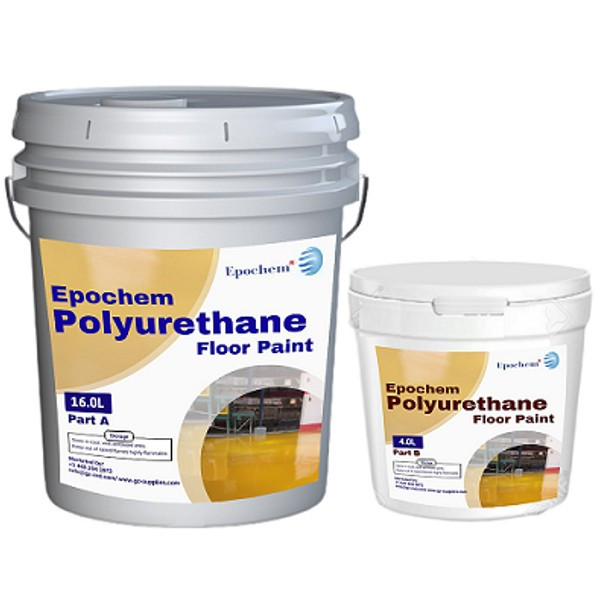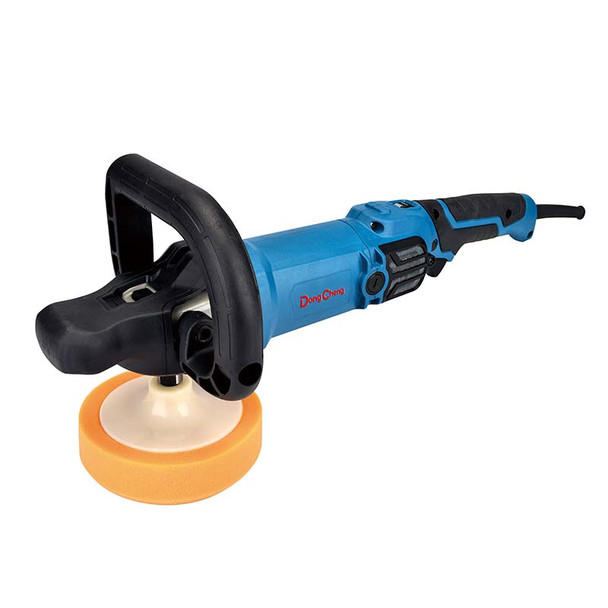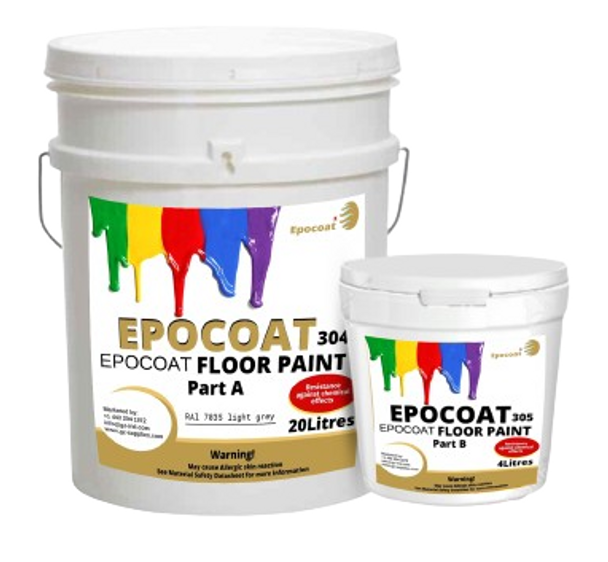The Science of Floor Paint: How it Works and What to Expect
Introduction to Floor Paint
We are excited to delve into the fascinating world of floor paint and uncover the science behind this essential product and how it works. Floor paint is a specialized coating designed to protect and enhance the appearance of floors. It is applied to concrete, wood, or other flooring surfaces to create a durable, easy-to-clean, and attractive finish. Floor paint is available in a wide range of colors and finishes, from matte to glossy, and can be used in various settings, including residential homes, commercial buildings, industrial facilities, garages, basements and warehouses.
Floor paint forms a barrier against physical and chemical damage, protecting the underlying flooring material. It is highly durable and resistant to wear, tear, and abrasion, ensuring that the painted floor surface remains in good condition for an extended period and offers a smooth and shiny surface that adds a touch of elegance and professionalism to any space.
Whether you're a homeowner, a DIY enthusiast, or a professional contractor, understanding the intricacies of floor paint can make all the difference in achieving a beautiful and long-lasting finish for your floors.
 Epochem Polyurethane Floor Paint… For a Superior & Long lasting Surface Finish
Epochem Polyurethane Floor Paint… For a Superior & Long lasting Surface Finish
Understanding the Importance of Floor Paint
Floor paint plays a crucial role in protecting and enhancing the appearance of your floors. It not only serves as a decorative element but also provides a durable and slip-resistant surface that can withstand the daily wear and tear of foot traffic, spills, and other environmental factors. By choosing the right floor paint, you can transform the look and feel of any room, adding both functionality and aesthetic appeal to your living space.
Different Types of Floor Paint
When it comes to floor paint, there are several types to choose from, each with its own unique properties and applications. From oil-based paints to water-based acrylics, the options are diverse and tailored to meet the specific needs of your flooring material, whether it's concrete, wood, or even vinyl. Understanding the differences between these paint types will help you make an informed decision that best suits your project.
Factors to Consider Before Choosing Floor Paint
Before diving into the application process, it's essential to consider several factors that can impact the success of your floor painting project. These include;
- The condition of your existing floor
- The level of foot traffic in the area
- The desired finish (matte, glossy, or semi-gloss)
- The overall aesthetic you're trying to achieve.
By carefully evaluating these factors, you can ensure that the floor paint you select will provide the optimal performance and long-lasting results.

The Science Behind Floor Paint
The science behind floor paint is a fascinating topic that delves into the chemical composition and physical properties of these specialized coatings. From the binders that provide adhesion and durability to the pigments that create the desired color, each component of floor paint plays a crucial role in its performance. Understanding the science behind floor paint can help you make informed decisions and ensure that your project is a success.
Benefits of Using Floor Paint
The benefits of using floor paint are numerous and can have a significant impact on the overall functionality and appearance of your living space. Some of the key advantages include improved traction and slip resistance, enhanced protection against wear and tear, the ability to customize the color and finish, and increased property value. By investing in high-quality floor paint, you can transform your floors and create a safer, more visually appealing environment for your family and guests.
How to Prepare the Floor Before Applying Paint
Proper floor preparation is the foundation for a successful floor painting project. This involves thorough cleaning, removing any existing coatings or sealers, and ensuring a smooth, level surface. Depending on the condition of your floor, this may require sanding, patching, or even more extensive repairs. Taking the time to properly prepare the floor will ensure that the paint adheres correctly and provides the desired results.
 DongCheng Sander Polisher DSP05-180 - The Best for Smooth Surfaces and a Professional-grade Flooring Prep.
DongCheng Sander Polisher DSP05-180 - The Best for Smooth Surfaces and a Professional-grade Flooring Prep.
Step-by-Step Guide to Applying Floor Paint
Once the floor is properly prepared, the application process begins. This typically involves a series of steps to ensure a smooth, durable, and long-lasting finish. Here's a step-by-step guide:
1. Prepare the Floor:
- Clean the floor thoroughly to remove dirt, oil, and old coatings.- Fix any cracks or damages with a patching compound.- Sand the floor to create a smooth surface.
2. Tape Off the Edges:
- Use painter's tape to mask off baseboards, trim, and any areas you don't want to paint.
3. Prime the Floor:
- If your floor has a glossy finish or is made of a porous material, apply a primer first.
- Allow the primer to dry according to the manufacturer's instructions.
4. Apply the First Coat of Paint:
- Start painting from the center of the floor and work your way outwards in sections.- Use a roller to cover large areas and a brush for edges and corners.
-Apply the paint in thin, even layers, allowing each layer to dry before applying the next.
5. Apply Additional Coats:
- Depending on the color and finish you want, you may need to apply multiple coats of paint.
-Allow each coat to dry according to the manufacturer's instructions.
6. Remove the Tape:
- After the final coat of paint has dried, remove the tape from the edges and trim.
7. Seal the Floor (Optional):
- Apply a clear sealant to protect the paint and make cleaning easier.
8. Allow the Paint to Cure:
- Let the paint cure for the recommended amount of time before walking or driving on the floor.
Additional Tips; Remember to always follow the manufacturer's instructions for the specific floor paint you're using, and take necessary safety precautions like wearing gloves and working in a well-ventilated area. Use a paint tray or bucket with a grid to prevent paint from dripping onto the floor. Work in small sections to maintain even coverage and avoid roller marks, Allow each coat to dry completely before applying the next coat or walking on the floor as the drying time between coats all play a crucial role in achieving a professional-looking finish.
 EPOCOAT 304/305 Floor Paint- Delivers Industrial-Strength Aesthetics…Ideal for High-Traffic Spaces
EPOCOAT 304/305 Floor Paint- Delivers Industrial-Strength Aesthetics…Ideal for High-Traffic Spaces
Common Mistakes to Avoid When Using Floor Paint
Despite the best intentions, there are several common mistakes that homeowners and DIYers can make when using floor paint. These include applying the paint in unsuitable weather conditions, failing to properly clean the surface, using the wrong type of paint for the surface, and applying the paint in an uneven or inconsistent manner. By being aware of these potential pitfalls, you can take the necessary precautions to ensure a successful floor painting project.
Maintenance and Care Tips for Floor Paint
Maintaining the longevity and appearance of your floor paint is essential for preserving the investment you've made in your home. This involves regular cleaning, addressing any minor chips or scratches, and applying a protective sealant or topcoat as needed. By following a consistent maintenance routine, you can ensure that your floor paint continues to look its best for years to come.
Frequently Asked Questions About Floor Paint
What kind of Paint should you use on a wooden floor?
Look for floor-specific paint, which is water-based and doesn't need a primer, making it easy to use and resistant.
Which Floor Paint is most Appropriate for your Project?
The choice of floor paint depends on the type of floor you have. Different floor paints are designed for different materials and purposes.
Why is grey Floor Paint so popular for garage floors?
Grey floor paint is popular for garage floors because it is a neutral color that can hide dirt and stains.
Conclusion
Exploring the science behind floor paint has been a fascinating journey. From understanding the different types of paint to mastering the application process, we have covered a wealth of information that can help you make informed decisions and achieve stunning results for your floor painting project. Whether you're a seasoned DIYer or a homeowner looking to breathe new life into your living space, the insights we have provided can serve as a valuable guide to unlocking the secrets of floor paint.
If you have any questions or need assistance with your floor painting project, don't hesitate to Contact Us, Our team of experts is here to help you every step of the way, ensuring that your floors look their absolute best.
Recent Posts
-
How to Choose the Right Industrial Cleaning Service Provider
Key takeawayThoroughly Assess Your Needs and Providers: Understand your specific industrial cle …Jul 26, 2024 -
Floor Paint Maintenance: How to Keep Your Floors Looking Their Best
Maintaining your painted floors is essential for preserving their beauty and extending their lifespa …Jul 25, 2024 -
The Best Floor Paint for Different Types of Flooring
When it comes to revitalizing your home's flooring, choosing the right paint can make all the d …Jul 19, 2024





